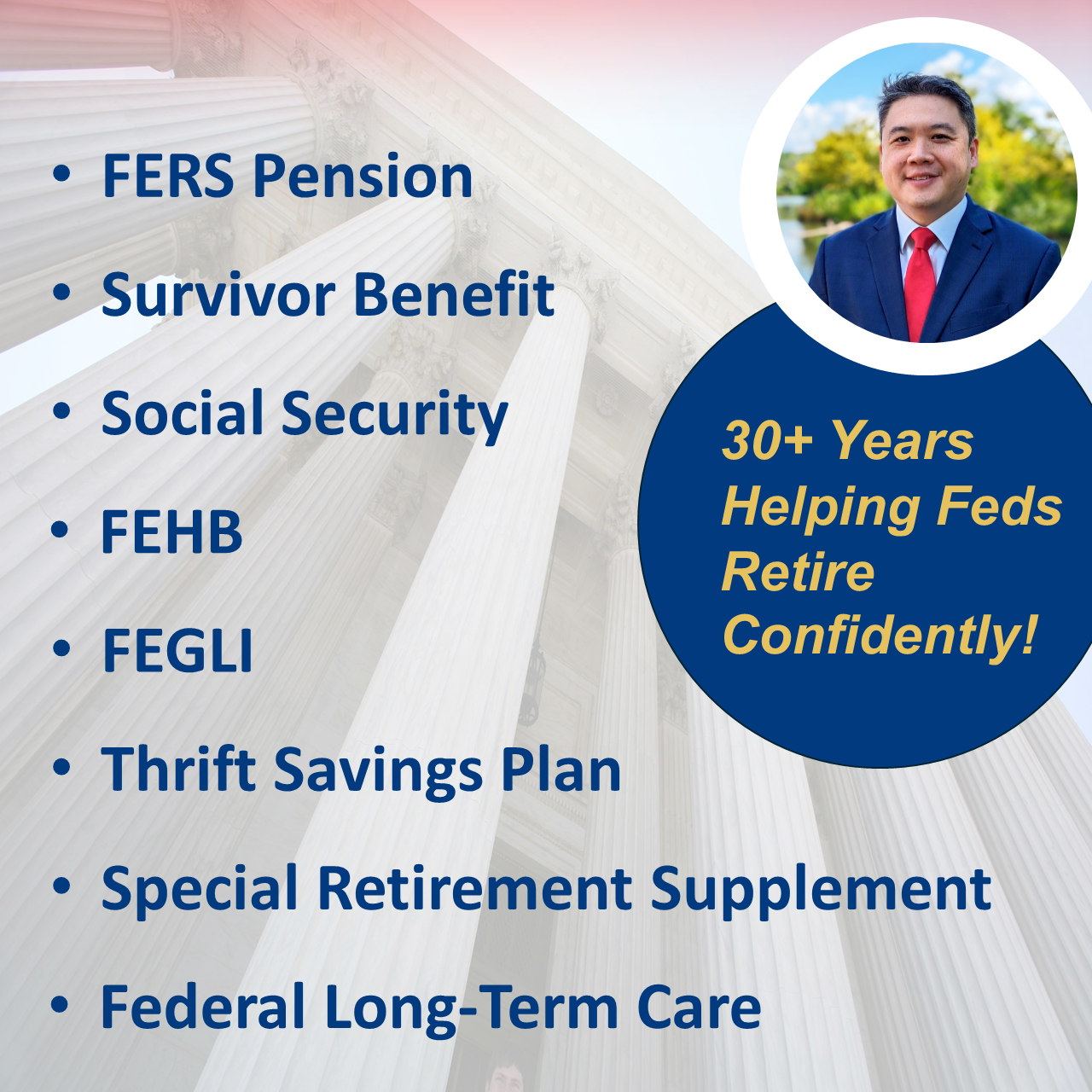Simplify Your FERS Pension Calculation
For many federal employees—particularly those nearing retirement age—understanding the Federal Employees Retirement System (FERS) pension can feel like unraveling a complicated puzzle. Perhaps you’ve heard conflicting stories about how overtime factors into your highest salary years, or you wonder if online FERS pension calculator tools can deliver reliable estimates. In reality, with the right knowledge and guidance, calculating your federal pension does not have to be complicated. Each of the core components in the FERS formula can be broken down into manageable steps, giving you clarity about how your benefits will likely shape your retirement lifestyle.
Our goal is to walk you through an effortless approach to identifying the key numbers—like your high-3 salary and creditable service—so that you can see exactly what your estimated annual pension might look like under different scenarios. By the end, you’ll have a straightforward guide to calculating and refining your estimates. More importantly, if you realize you’d like personalized help, you’ll be aware of how our Fed-Expert Financial Blueprint at PlanWell can offer even deeper insights tailored to your unique situation.
Understanding the FERS Pension Formula
The foundational FERS pension formula is elegant in its simplicity: annual gross pension = high-3 salary × years of creditable service × pension multiplier. It’s like piecing together three fundamental building blocks. That said, each block must be handled correctly for the result to be accurate. This is why even the best federal retirement calculator needs solid, well-documented inputs.
The first of these building blocks is your high-3 salary. This represents the average of your highest three consecutive years of base pay—including locality pay, but excluding overtime or bonuses. Although these three years often happen at the very end of your career, they do not necessarily need to be the final three calendar years. They can be any consecutive period in which your pay was at its peak.
Next is the total number of years of creditable service. This figure can encompass more than most people realize: it includes your permanent federal service, plus potentially any unused sick leave or purchased military service (often called a “buyback”). Even a short break in your mid-career years might need to be factored in if you left federal service for a time.
Finally, the pension multiplier can depend on your age at retirement. For most FERS participants, it’s 1%. However, if you retire at 62 or older with at least 20 years of creditable service, your multiplier goes up to 1.1%. That might not sound like a massive change, but that 10% difference can become significant over many years of retirement.
Often, seeing some numbers side by side can make these differences clear. Let’s take a quick look at how varying your retirement age, service length, and multiplier might affect your resulting pension percentage.
| Retirement Age | Years of Service | Pension Multiplier | Resulting Pension % |
|---|---|---|---|
| 60 | 25 | 1% | 25% of High-3 |
| 62 | 20 | 1.1% | 22% of High-3 |
From this comparison, you can spot how retirement age and total years of service shape your results. An employee waiting until age 62, even with slightly fewer years of service, could see a substantial benefit in the ultimate percentage of their high-3 salary.
Step-by-Step FERS Calculation Example
Working your way through the formula in real numbers is often the best way to allay confusion. Let’s walk through a couple of scenarios people frequently ask about when trying out a FERS annuity calculator or even an official OPM estimate.
Imagine that you’re 60 years old, with 25 total years of creditable service. Your high-3 salary is $100,000 per year, and you’re not waiting until 62 to retire. In this scenario, your pension multiplier is 1%. So, the math goes like this:
Annual Pension = 25 years × $100,000 × 1% = $25,000.
Simple enough. Now, what if the same individual waited until age 62—with the same high-3, same years of service, and thereby earned the 1.1% multiplier? Doing that changes the equation to:
Annual Pension = 25 years × $100,000 × 1.1% = $27,500.
While $2,500 a year in extra retirement income might or might not be life-changing, it’s enough to illustrate why many people see a real advantage in postponing retirement if they’re approaching that pivotal 62 mark. Of course, it’s always wise to look at broader personal circumstances. Even though an official federal pension calculator or a professional estimate might encourage you to delay, you need to weigh factors like health, morale, or personal savings goals rather than just focusing on the mathematics alone.
Also, remember that your “creditable service” figure could go up if you have sick leave to convert or if you choose to buy back qualified active-duty military service time. These credits often push the final pension number up more than people initially realize. You might run one FERS retirement calculator example based solely on time actively served, then another scenario factoring in sick leave or buyback. A small difference in the number of years can mean big changes in your annual benefit.
Additional Factors Influencing Your Pension
While the fundamental equation never changes, real life throws you additional considerations. Your Minimum Retirement Age (MRA), potential early retirement penalties, special retirement supplements, and survivor benefit elections can all influence the straightforward formula.
For instance, if you choose to retire the minute you hit your MRA, you could see a penalty for each year you retire under 62. Typically, your pension might be reduced by 5% per year below 62. So, someone retiring at 56 might face a penalty of up to 30%. Of course, you may feel that an early exit is worth the reduced benefit, but it’s important to go in with your eyes open.
Below is a table that summarizes some key data points about MRAs, along with the penalty for retiring under 62. It’s a good rule of thumb to keep these numbers in mind, especially if you’re seeking to retire as soon as you hit that MRA.
| Birth Year | Minimum Retirement Age | Penalty If Retiring Before 62 |
|---|---|---|
| 1953–1964 | 56 | Reduced 5% per year under 62 |
| 1965–1969 | 56 and 2 to 56 and 10 mo. | Reduced 5% per year under 62 |
| 1970 or later | 57 | Reduced 5% per year under 62 |
If you’ve ever run a how to calculate FERS retirement query online and been disappointed by the complexity, these penalty details might have been part of the confusion. The same is true for the SRS, which can help bridge your income until Social Security is available at 62. But the SRS isn’t integrated into all online federal employee pension calculator tools automatically, so not every online resource will show you how that extra benefit might shift your overall retirement landscape.
Additionally, you might choose to elect a survivor benefit, which reduces your own monthly pension by either 5% or 10%, ensuring a surviving spouse or other beneficiary continues to receive a portion of your pension after your passing. Some individuals prefer a small reduction for peace of mind; others weigh separate life insurance coverage or spousal assets.
Finally, there are those who fall under CSRS Offset rules, especially if they transitioned from CSRS to FERS mid-career. If that describes you, keep in mind that your calculation might blend aspects of both systems. It’s time well spent to confirm that you understand any offsets for Social Security.
Tools & Tips for Simplifying Your FERS Pension
It’s tempting to either rely entirely on an online FERS calculator or to ignore online estimates altogether. In truth, a balanced approach is wise. The official OPM calculator is typically the gold standard, but it can be less flexible if you have unique circumstances. Private calculators can sometimes give you a more nuanced picture, especially if you have leftover sick leave, military service buyback, or plan on electing a survivor benefit. That said, always ensure you’re inputting the right data, or you might end up with inaccurate results.
Take the time to verify your SF-50 forms and other personnel documents so that your creditable service figure is correct. If you find mistakes or missing pieces like prior service, get those addressed as early as possible. It can take a long time to confirm or correct official records, and you do not want to be doing that at the last minute as you’re preparing to retire.
Another crucial tip is to evaluate your timing. If you’re on the cusp of meeting a significant threshold—such as turning 62 or hitting 20 years of service—delaying your retirement could mean you qualify for a higher multiplier. Even a few extra months on the job might punch your “years of service” up by another increment, which can directly raise your annual pension.
Similarly, keep a careful eye on your sick leave balances. Under FERS, unused sick leave can be converted into additional months (or even a year or more, in some cases) of creditable service. That often surprises employees who didn’t realize how valuable those hours can be in the final math. A well-rounded FERS retirement calculator example should consider this factor, but not all third-party tools do it well.
Invitation to Further Guidance
While it’s absolutely possible to arrive at a fair estimate of your FERS pension by carefully applying the formula, many federal employees find that deeper context is invaluable for making final decisions. After all, other streams of retirement income—like Thrift Savings Plan (TSP) balances or even part-time retirement work—might influence when the ideal retirement date is for you.
That’s where the Fed-Expert Financial Blueprint from PlanWell comes in, providing a thoughtful, holistic evaluation of your situation. Our advisors are fully credentialed with ChFEBC, CFP, and AIF designations, and we’ve spent more than 30 years helping people just like you navigate these crucial choices. If you’d like the chance to delve deeper, you can sign up for one of our free Federal Retirement Planning Workshops right now. We host these events to help you zero in on actionable steps, implement best practices, and address questions that generic FERS annuity calculator websites might leave unanswered.
For more tailored guidance, sign up for one of our free Federal Retirement Planning Workshops, where we walk you through the entire FERS retirement formula and show you how to pull all the pieces together. We’ll also explore how factors like Social Security timing, TSP growth strategies, and other retirement considerations can dovetail with your FERS pension.
Conclusion
Calculating your FERS pension does not have to be stressful or confusing. By focusing on your high-3 salary, creditable service, and understanding where you stand on the pension multiplier (particularly the bump available at age 62 when you have 20 years of service), you can quickly develop a reliable picture of what to expect in retirement. The additional features—like the Special Retirement Supplement, early retirement penalties, and survivor benefits—may adjust your outcomes, but at its heart, the FERS formula remains straightforward.
Once you see how each piece of the puzzle fits, you’ll begin to notice decisions you can make that can significantly influence your long-term financial well-being. Whether that’s waiting until your birthday to pick up an extra service year, double-checking your personnel records, or adding a survivor benefit, each choice plays into your future security. That’s why it pays to do the math thoughtfully or consider a professional resource for more customized guidance.
Ultimately, if you’re still wrestling with the finer points of how your pension will integrate with your other benefits, you don’t have to go it alone. Our team at PlanWell stands ready to assist as your financial advisor for federal employees, applying decades of experience and specialized credentials through our Fed-Expert Financial Blueprint process. We believe that once you have clarity—with or without an online federal retirement calculator—you can make decisions that match your personal needs and goals.
We invite you to connect with our experts or attend one of our free Federal Retirement Planning Workshops for a deeper dive into building a confident retirement. By blending professional guidance, the right tools, and your own thoughtful analysis, you can simplify your FERS pension planning and move forward feeling truly prepared.












